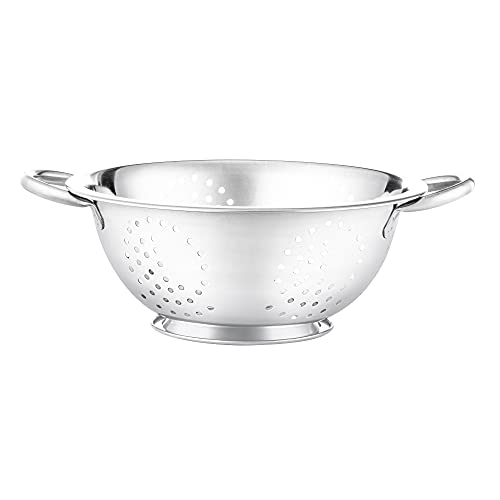Difference between a Colander and a Strainer
Colanders and strainers are both kitchen tools that are used to strain liquid from food. Although they might look similar, there are significant differences between the two. Understanding these differences is important to decide which one to use for different purposes.
Size and Shape
One noticeable difference between a colander and a strainer is their size and shape. A colander is typically larger than a strainer and has larger holes. They are usually bowl-shaped with two handles on either side, making them perfect for straining larger food items such as pasta or potatoes. On the other hand, strainers are generally smaller, have finer holes, and are conical or conical-shaped.
Functions
While colanders are intended for larger food items, such as vegetables or fruits, they are also great for general-purpose straining. For instance, removing moisture from cooked pasta or washing berries. However, strainers are intended to be used for fine food items, such as flour, powdered sugar, or ground spices. They’re perfect to extract seeds from juices or to sift flour for baking.
Materials
Colanders and strainers come in various materials such as plastic, wood, or metal. While plastic colanders and strainers are cheap and lightweight, metal ones are durable and perfect for hot liquids. Wooden colanders and strainers are perfect for cleaning fruits and vegetables. These materials may also impact the price, durability, and maintenance needed for the colander or strainer you choose.
Maintenance
The type of maintenance that the colander or strainer requires depends on the material. All plastic colanders and strainers can be washed in the dishwasher, but many metal and wood colanders and strainers are not dishwasher safe. In general, metal colanders and strainers are the most durable and require the least maintenance.
In conclusion, while colanders and strainers may seem very similar, they both serve different purposes in the kitchen. The choice depends on the type of food you want to strain and the convenience with which you can maintain them. It’s essential to identify which tool is best suited for your needs so you can stride confidently in the kitchen.






